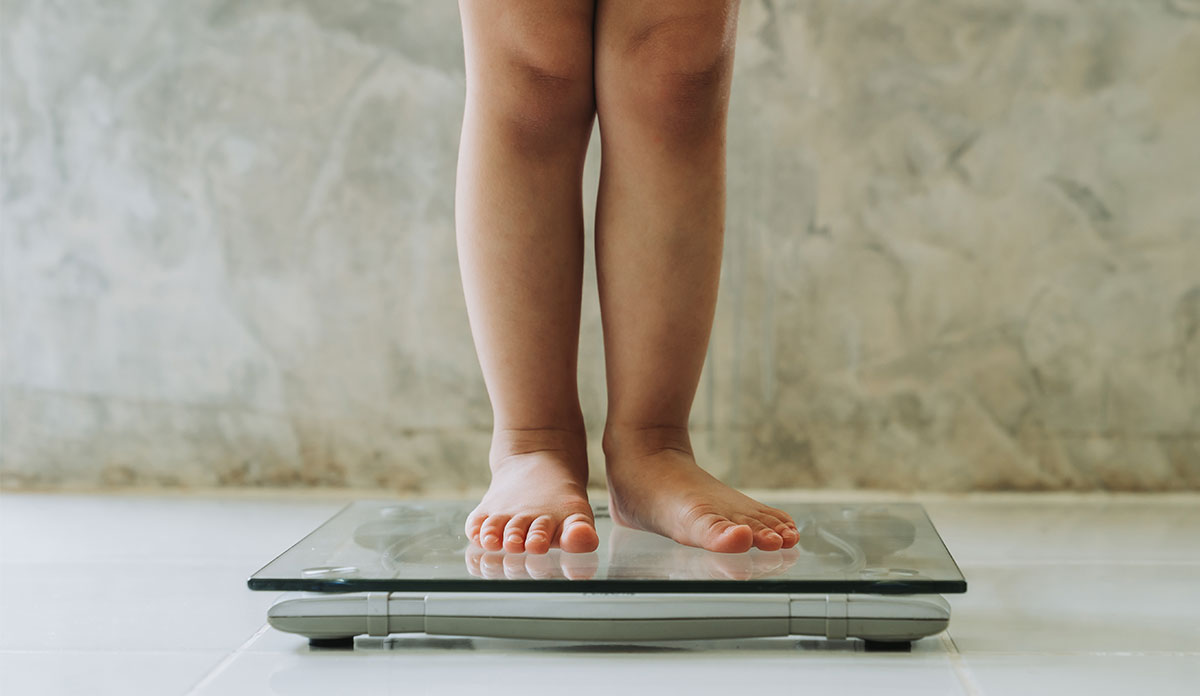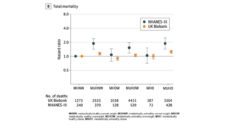Childhood obesity is known to be a risk factor for early puberty in girls, but studies on the relationship between obesity and puberty in boys have had mixed results.
To fill this gap in the evidence, my colleagues and I conducted the first large population-based study on obesity and puberty in boys and girls. Our study included 129,824 racially and ethnically diverse boys and girls born at a Kaiser Permanente Northern California (KPNC) hospital between 2003 and 2011. We reviewed electronic medical record data to determine each child’s weight and height at age 5 to 6 and then the age they started puberty.
KPNC physicians routinely record signs of sexual maturity — testicular size, growth of pubic hair, breast development, and start of menstruation — which allowed us to determine puberty onset. BMI was classified as underweight (<5th percentile), normal weight (5th to <85th percentile), overweight (85th to <95 th), obese (≥95thpercentile), and severely obese (≥120% of the 95 th percentile.
We found that the relationship between obesity and puberty in boys is similar to what we have seen in girls. This is significant because we know that early puberty is tied to an increased risk for depression and other mental health and behavioral problems in adolescence. In adults, early puberty is a cancer risk factor; it’s also been associated with an increased risk for cardiovascular disease and diabetes.
Girls with severe obesity had a 63% greater risk of showing earlier breast development and an 88% higher risk of developing pubic hair earlier than normal weight girls.
Girls with severe obesity had a 63% greater risk of showing earlier breast development and an 88% higher risk of developing pubic hair earlier than normal weight girls. The start of menstruation was even more closely tied to weight. Girls with severe obesity were 2.6 times more likely to have their periods start before the age of 12 than girls with normal weight. Similarly, girls with obesity were 2.2 times more likely to start menstruating early.
Boys with overweight or obesity had a greater risk of experiencing earlier testicular development than boys who were normal weight. The risk ranged from 15% higher for boys who were overweight to 23% higher for boys with severe obesity. Similarly, boys with severe obesity had a 44% higher risk of showing pubic hair growth earlier than boys with normal weight.
We also found racial and ethnic variations in weight and signs of sexual maturity. For example, White boys with severe obesity showed signs of pubic hair about 7 months earlier than boys with normal weight. And Black boys with obesity showed signs of pubic hair about 6 months earlier. Black girls with severe obesity showed signs of pubic hair about 12 months earlier than normal weight girls. Asian-American and Pacific-Islander girls were 11 months earlier, and White girls about 8 months.
Given that race and ethnicity are largely social constructs, it is unlikely the variations we found could be explained by biology alone. We believe the differences we found reflect a complex interplay of socioeconomic and psychosocial factors rather than genetic factors.
Although we may not know the precise reasons for these variations, we do know that both obesity and early puberty can lead to a lifetime of higher health risks. It is important for public health educators and pediatricians to help parents of children with overweight or obesity recognize that their child’s weight at puberty does not dictate their future health. By identifying and discussing obesity in ways that avoid shame, they can create opportunities to help children and their families begin to build habits that will keep them healthy.
Photo via Getty Images














